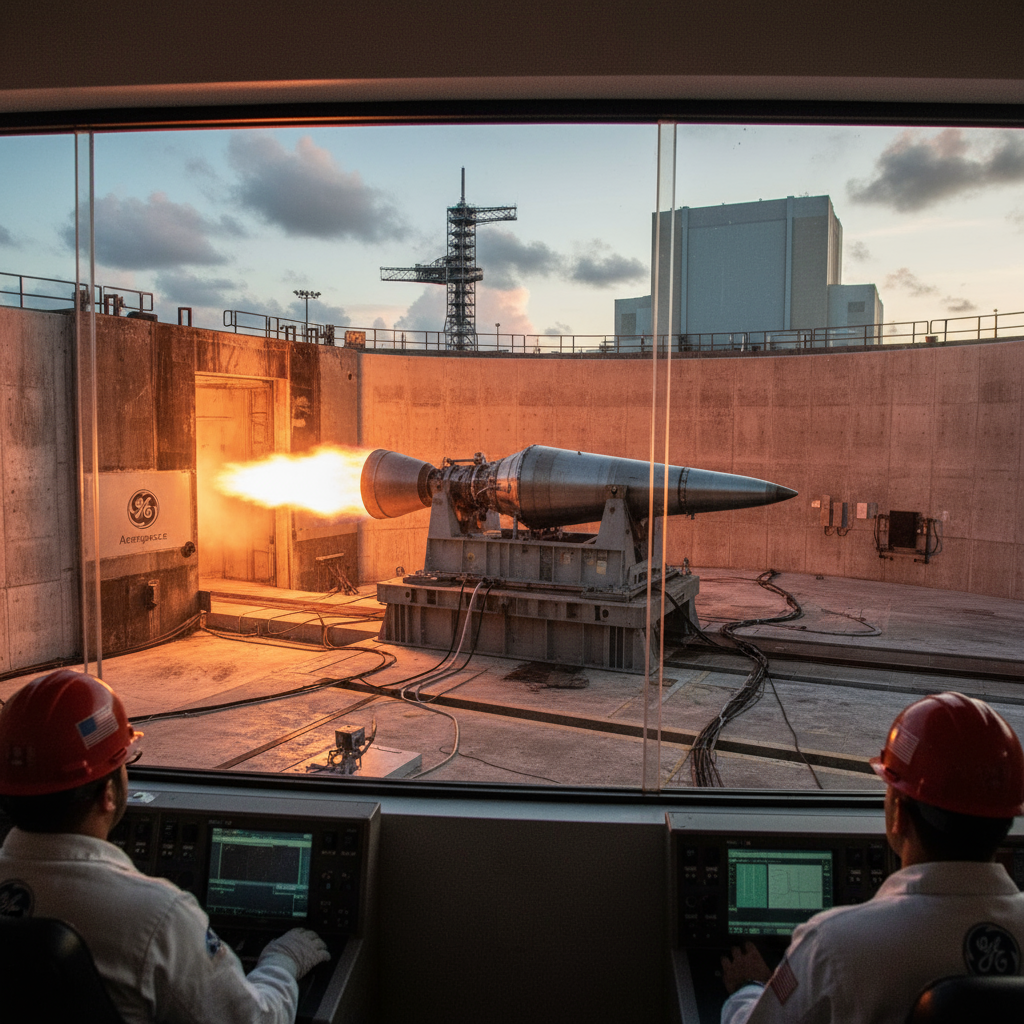Physical Address
304 North Cardinal St.
Dorchester Center, MA 02124
Physical Address
304 North Cardinal St.
Dorchester Center, MA 02124
Global aviation news tracker
Global aviation news tracker

GE Aerospace flew a solid‑fueled supersonic ramjet test from Kennedy Space Center on September 22, 2025, using the ATLAS test vehicle.
GE Aerospace completed a supersonic ramjet flight test on September 22, 2025, at Kennedy Space Center (KSC), Florida. The company said its ATLAS test vehicle sustained supersonic speeds while powered by a solid‑fueled ramjet, validating performance and system reliability during a critical developmental milestone.
Ramjets are air‑breathing engines that compress incoming air at high speed before combustion, and a successful supersonic ramjet run signals progress for next‑generation high‑speed aircraft and tactical missile propulsion. GE framed the flight as an important step toward propulsion systems that could support both U.S. defense needs and future commercial high‑speed transport concepts.
The test confirmed that the ATLAS vehicle and its solid‑fuel ramjet worked as intended through ignition, sustained burn, and flight termination phases. Engineers monitored thrust, structural loads, and thermal behavior — all key data for moving from ground demonstrations to integrated flight programs. GE said the run helps derisk longer‑duration, higher‑Mach flight envelopes.
Next steps for the program typically include data analysis, incremental design updates, and additional flight tests to expand the operational envelope. For defense programs, that can mean integration with guidance, payload, and target systems; for civil concepts, it means exploring thermal protection, fuel options, and regulatory pathways. GE characterized the milestone as part of a broader push to mature propulsion technologies that could enable hypersonic and sustained supersonic operations down the road.
While GE Aerospace positioned the test as a technical success, industry watchers will look for published data and follow‑on flights that show repeatability and scale. The September 22 run at KSC is a visible sign that solid‑fueled ramjet development is moving from labs and static tests into controlled, high‑speed flight demonstrations.